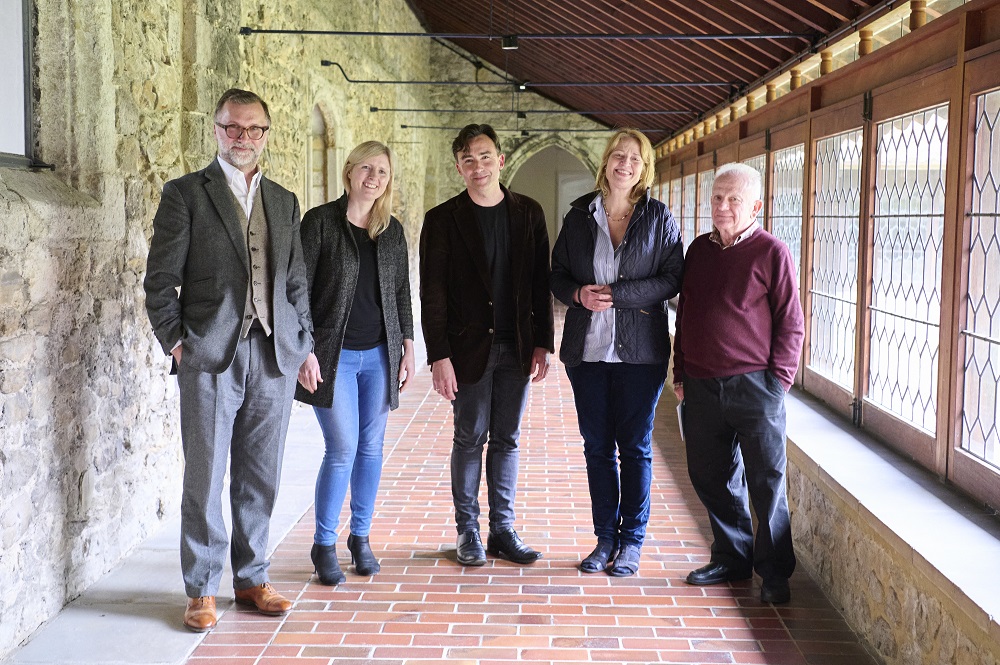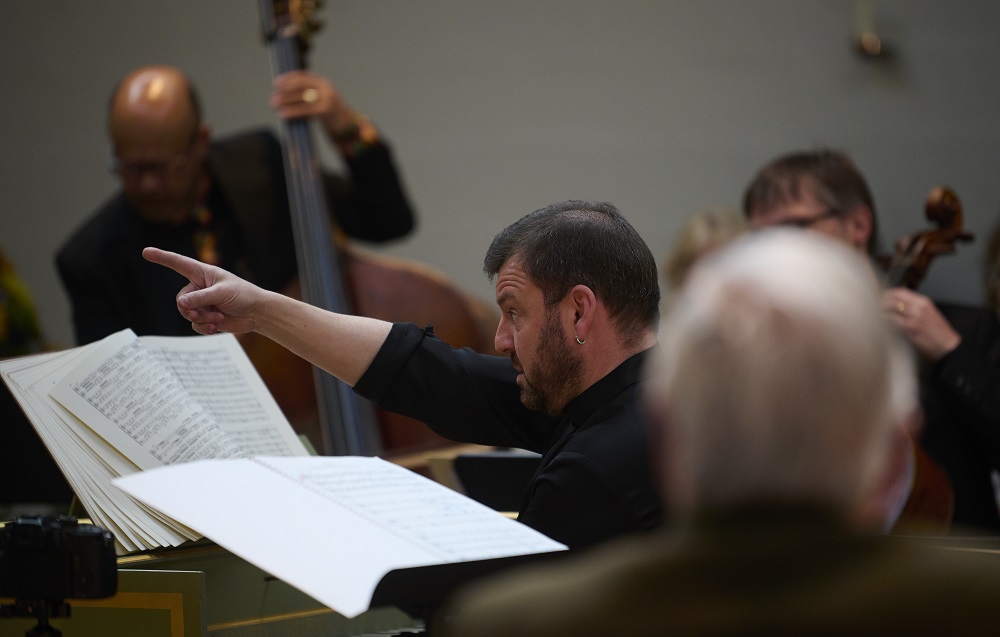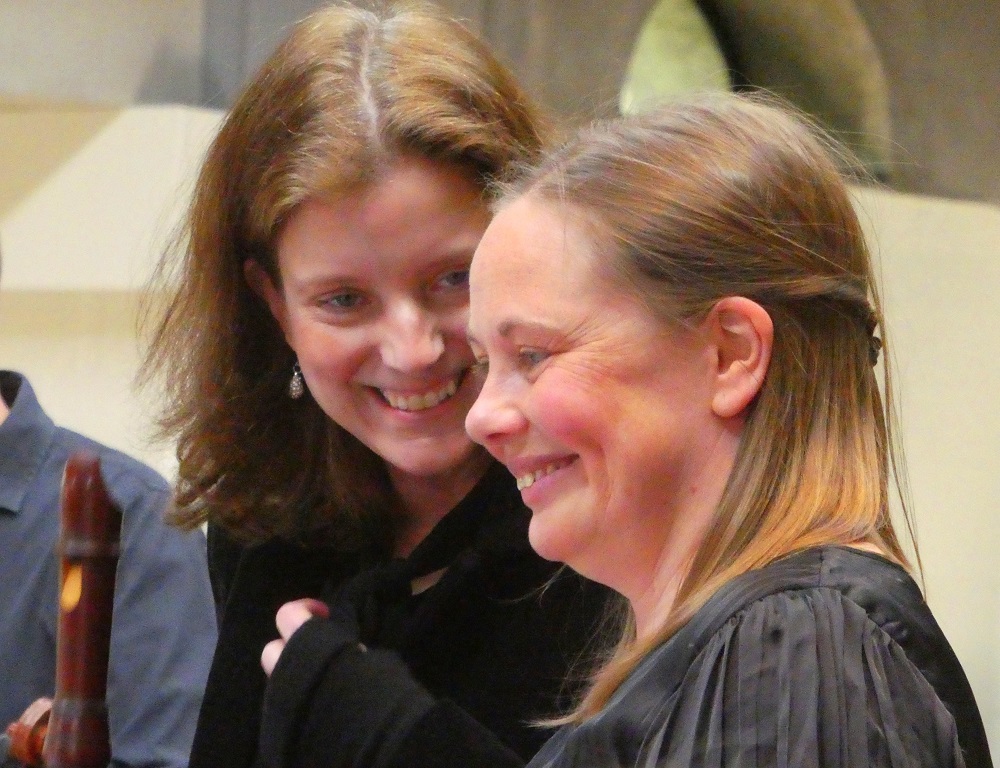Six Brandenburgs: Six Commissions, Chamber Domaine, Malling Abbey review - metaphysical brilliance | reviews, news & interviews
Six Brandenburgs: Six Commissions, Chamber Domaine, Malling Abbey review - metaphysical brilliance
Six Brandenburgs: Six Commissions, Chamber Domaine, Malling Abbey review - metaphysical brilliance
Bach binds together six equally compelling new works and some of the UK's top players
"Contemporary classical", for want of a better term, works best in concert as a cornucopia of shortish new works offering a healthy range of styles and voices. Add to the mix six of the most exhilarating and original chamber concertos ever, by no means casting complementary premieres in the shade, put together some of the UK’s best musicians and make it an afternoon marathon taking place in the round aatn extraordinary venue, and success should be total.
And it was, on Saturday from noon to 5.30pm, in the exquisite surroundings of Malling Abbey The idea isn't unprecedented: the Swedish Chamber Orchestra initiated the six-Bach-six-new format back in 2015, originating the project in its home town of Örebro, where in a hall with disappointingly plummy acoustics I heard the first two ventures including phenomenal trumpeter Håkan Hardenberger in Steve Mackey's Triceros, and presenting the full results in two Proms three years later. Theartsdesk's Sebastian Scotney found them way too long, and noted that, despite the distinguished roster of composers, some of the new works "seemed to outstay their welcome, with people walking out." 
Brian Elias, an outstanding figure in contemporary music regularly featured in West Malling, may have served up the grittiest work in the most oblique tribute, Sequel, to the First Brandenburg Concerto; the harmonic language more angsty than anything Bach might have envisaged, but the essence of the dance very much intact to hold the interest, and some exquisite writing for individual instruments (especially for the bassoon, so well played by Sarah Burnett before she and the oboists bowed out of the day's proceedings). In pure, diatonic contast came The Malling Diamond by Michael Price, who wrote about composition of the work so lucidly last week on theartsdesk (there is no disparagement at all in mentioning that this engaging musical chameleon, also a fine pianist, is the composer of the very catchy score to the BBC's Sherlock). He had the considerable incentive of writing for the trumpet which plays such a wondrous part in the Second Brandenburg Concerto, bringing it to the high-wire fore in the second of The Malling Diamond's two slower sections. 
Two of the new works paid homage to the ecclesiastical setting. Daniel Kidane's compelling Concerto Grosso feeds a chorale between livelier lines (and produced the most original sounds of the day, the twitchings of harpsichord and two recorders against more sustained lines). Stevie Wishart had gone straight to the source and the setting for Gold and Precious Silver, asking the Abbey Choir Mistress for a chant, again elaborated by harpsichord echoes of the birdsong which framed the work against the chant using the strings minus violins which are Bach's basis for a concerto which truly rocked under harpsichordist Steven Devine's direction (pictured below by Thomas Bowles, with double-bassist Leon Bosch). There was special refreshment here, with the work being written to fit between the second and third movements of Brandenburg 6. 
There was never a point in any of the three afternoon concerts where you wanted to say "can we get back to Bach, please?" And yet the performances of the original concertos were so utterly compelling that I can only think of describing the outer movement effect as one of metaphysical exhilaration - yes, the soul danced and the body wanted to, but only Bach could transcendentalise the pitch of exuberance in this way. Devine, in addition to reducing us to mirthful wonder at his giddy achievement in the whopping big harpsichord cadenza of No. 4, projected the right propulsive energy as Bach director. Tom Piggot-Smith gave a robust injection of individual freedom into his various violin solos. 
rating
Explore topics
Share this article
The future of Arts Journalism
You can stop theartsdesk.com closing!
We urgently need financing to survive. Our fundraising drive has thus far raised £49,000 but we need to reach £100,000 or we will be forced to close. Please contribute here: https://gofund.me/c3f6033d
And if you can forward this information to anyone who might assist, we’d be grateful.

Subscribe to theartsdesk.com
Thank you for continuing to read our work on theartsdesk.com. For unlimited access to every article in its entirety, including our archive of more than 15,000 pieces, we're asking for £5 per month or £40 per year. We feel it's a very good deal, and hope you do too.
To take a subscription now simply click here.
And if you're looking for that extra gift for a friend or family member, why not treat them to a theartsdesk.com gift subscription?
more Classical music
 BBC Proms: Barruk, Norwegian Chamber Orchestra, Kuusisto review - vague incantations, precise laments
First-half mix of Sámi songs and string things falters, but Shostakovich scours the soul
BBC Proms: Barruk, Norwegian Chamber Orchestra, Kuusisto review - vague incantations, precise laments
First-half mix of Sámi songs and string things falters, but Shostakovich scours the soul
 BBC Proms: Alexander’s Feast, Irish Baroque Orchestra, Whelan review - rapturous Handel fills the space
Pure joy, with a touch of introspection, from a great ensemble and three superb soloists
BBC Proms: Alexander’s Feast, Irish Baroque Orchestra, Whelan review - rapturous Handel fills the space
Pure joy, with a touch of introspection, from a great ensemble and three superb soloists
 BBC Proms: Moore, LSO, Bancroft review - the freshness of morning wind and brass
English concert band music...and an outlier
BBC Proms: Moore, LSO, Bancroft review - the freshness of morning wind and brass
English concert band music...and an outlier
 Willis-Sørensen, Ukrainian Freedom Orchestra, Wilson, Cadogan Hall review - romantic resilience
Passion, and polish, from Kyiv's musical warriors
Willis-Sørensen, Ukrainian Freedom Orchestra, Wilson, Cadogan Hall review - romantic resilience
Passion, and polish, from Kyiv's musical warriors
 BBC Proms: Faust, Gewandhausorchester Leipzig, Nelsons review - grace, then grandeur
A great fiddler lightens a dense orchestral palette
BBC Proms: Faust, Gewandhausorchester Leipzig, Nelsons review - grace, then grandeur
A great fiddler lightens a dense orchestral palette
 BBC Proms: Jansen, Royal Concertgebouw Orchestra, Mäkelä review - confirming a phenomenon
Second Prom of a great orchestra and chief conductor in waiting never puts a foot wrong
BBC Proms: Jansen, Royal Concertgebouw Orchestra, Mäkelä review - confirming a phenomenon
Second Prom of a great orchestra and chief conductor in waiting never puts a foot wrong
 BBC Proms: Royal Concertgebouw Orchestra, Mäkelä review - defiantly introverted Mahler 5 gives food for thought
Chief Conductor in Waiting has supple, nuanced chemistry with a great orchestra
BBC Proms: Royal Concertgebouw Orchestra, Mäkelä review - defiantly introverted Mahler 5 gives food for thought
Chief Conductor in Waiting has supple, nuanced chemistry with a great orchestra
 Dunedin Consort, Butt / D’Angelo, Muñoz, Edinburgh International Festival 2025 review - tedious Handel, directionless song recital
Ho-hum 'comic' cantata, and a song recital needing more than a beautiful voice
Dunedin Consort, Butt / D’Angelo, Muñoz, Edinburgh International Festival 2025 review - tedious Handel, directionless song recital
Ho-hum 'comic' cantata, and a song recital needing more than a beautiful voice
 Classical CDs: Dungeons, microtones and psychic distress
This year's big anniversary celebrated with a pair of boxes, plus clarinets, pianos and sacred music
Classical CDs: Dungeons, microtones and psychic distress
This year's big anniversary celebrated with a pair of boxes, plus clarinets, pianos and sacred music
 BBC Proms: Liu, Philharmonia, Rouvali review - fine-tuned Tchaikovsky epic
Sounds perfectly finessed in a colourful cornucopia
BBC Proms: Liu, Philharmonia, Rouvali review - fine-tuned Tchaikovsky epic
Sounds perfectly finessed in a colourful cornucopia
 BBC Proms: Suor Angelica, LSO, Pappano review - earthly passion, heavenly grief
A Sister to remember blesses Puccini's convent tragedy
BBC Proms: Suor Angelica, LSO, Pappano review - earthly passion, heavenly grief
A Sister to remember blesses Puccini's convent tragedy
 BBC Proms: A Mass of Life, BBCSO, Elder review - a subtle guide to Delius's Nietzschean masterpiece
Mark Elder held back from blasting the audience with a wall of sound
BBC Proms: A Mass of Life, BBCSO, Elder review - a subtle guide to Delius's Nietzschean masterpiece
Mark Elder held back from blasting the audience with a wall of sound

Add comment